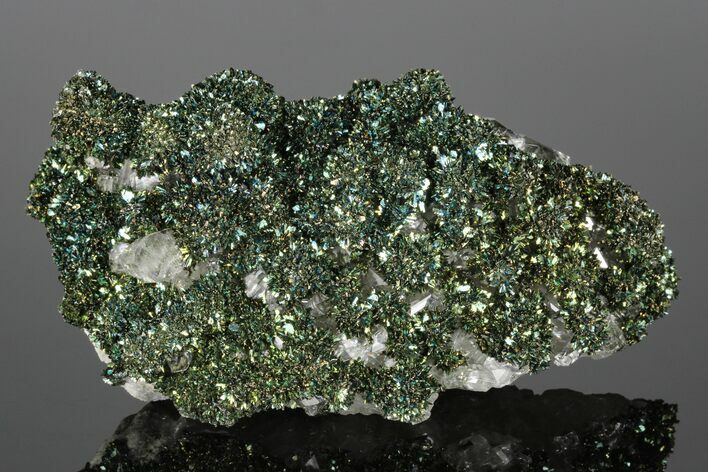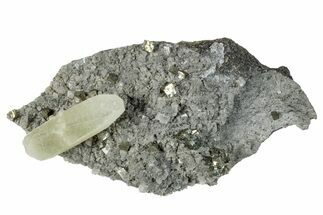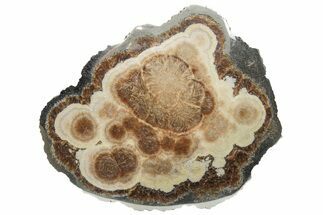This Specimen has been sold.
4.05" Lustrous Marcasite Crystals on Calcite - Linwood Mine, Iowa
This is a beautiful, 4.05" wide specimen of lustrous marcasite crystals on calcite that was collected from the Linwood Mine in Buffalo, Iowa. It comes with an acrylic display stand.
The Linwood Mine has been in operation since 1944: to this day, it ranks as one of the largest limestone mining locations in the United States. On relatively rare occasions, a vug containing minerals will be opened in the mining process, which are then extracted and saved. These vugs often contain beautiful crystal aggregations of calcite, barite, and marcasite, some of which are considered world-class quality specimens.
About Marcasite
Marcasite is an iron sulfide mineral with the chemical formula FeS2. It is similar to pyrite in both its chemical composition and appearance, but it forms an entirely different crystal structure and is much more reactive to humidity. It is often found within sedimentary rock and hydrothermal deposits, and at one point was used for its sulfur content.
Marcasite is an iron sulfide mineral with the chemical formula FeS2. It is similar to pyrite in both its chemical composition and appearance, but it forms an entirely different crystal structure and is much more reactive to humidity. It is often found within sedimentary rock and hydrothermal deposits, and at one point was used for its sulfur content.
About Calcite Crystals
Calcite crystals are a form of calcium carbonate (CaCO₃) known for their diverse shapes, transparency, and vibrant range of colors. They typically form in rhombohedral, scalenohedral, or prismatic shapes, often with well-defined, sharp edges and glossy surfaces. Calcite crystals are often translucent or transparent, sometimes displaying a double refraction effect where objects viewed through the crystal appear doubled. They can appear in various colors—white, clear, yellow, pink, blue, green, and orange—depending on impurities or trace minerals.
A notable characteristic of calcite is its reaction with weak acids like vinegar, which causes it to effervesce, or fizz, as it releases carbon dioxide. This property makes calcite crystals a key tool in geological identification and studies. Calcite forms in many environments, from sedimentary rocks like limestone and marble to hydrothermal veins.
Calcite crystals are a form of calcium carbonate (CaCO₃) known for their diverse shapes, transparency, and vibrant range of colors. They typically form in rhombohedral, scalenohedral, or prismatic shapes, often with well-defined, sharp edges and glossy surfaces. Calcite crystals are often translucent or transparent, sometimes displaying a double refraction effect where objects viewed through the crystal appear doubled. They can appear in various colors—white, clear, yellow, pink, blue, green, and orange—depending on impurities or trace minerals.
A notable characteristic of calcite is its reaction with weak acids like vinegar, which causes it to effervesce, or fizz, as it releases carbon dioxide. This property makes calcite crystals a key tool in geological identification and studies. Calcite forms in many environments, from sedimentary rocks like limestone and marble to hydrothermal veins.
SPECIES
Marcasite & Calcite
LOCATION
Linwood Mine, Buffalo, Scott County, Iowa
SIZE
4.05 x 2.2"
CATEGORY
ITEM
#176024
 Reviews
Reviews















